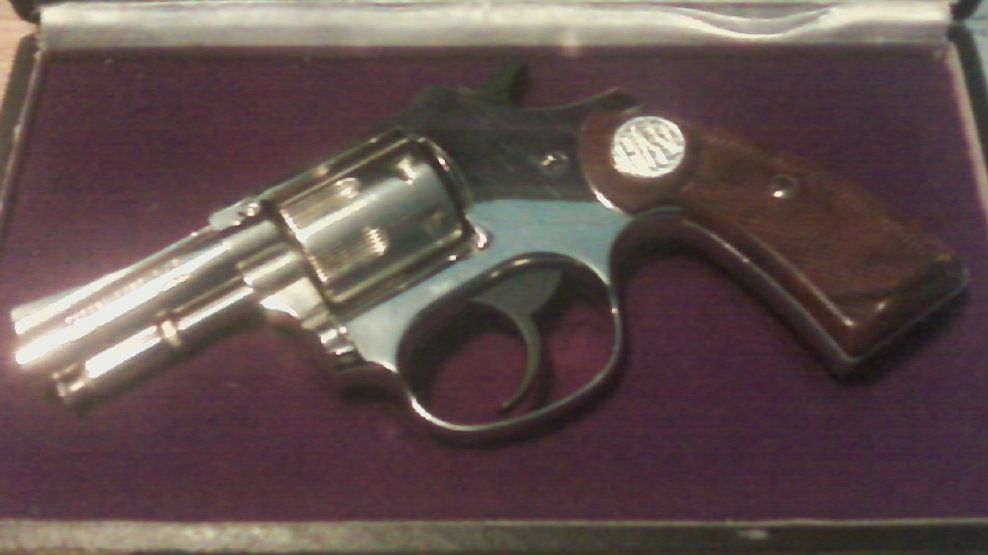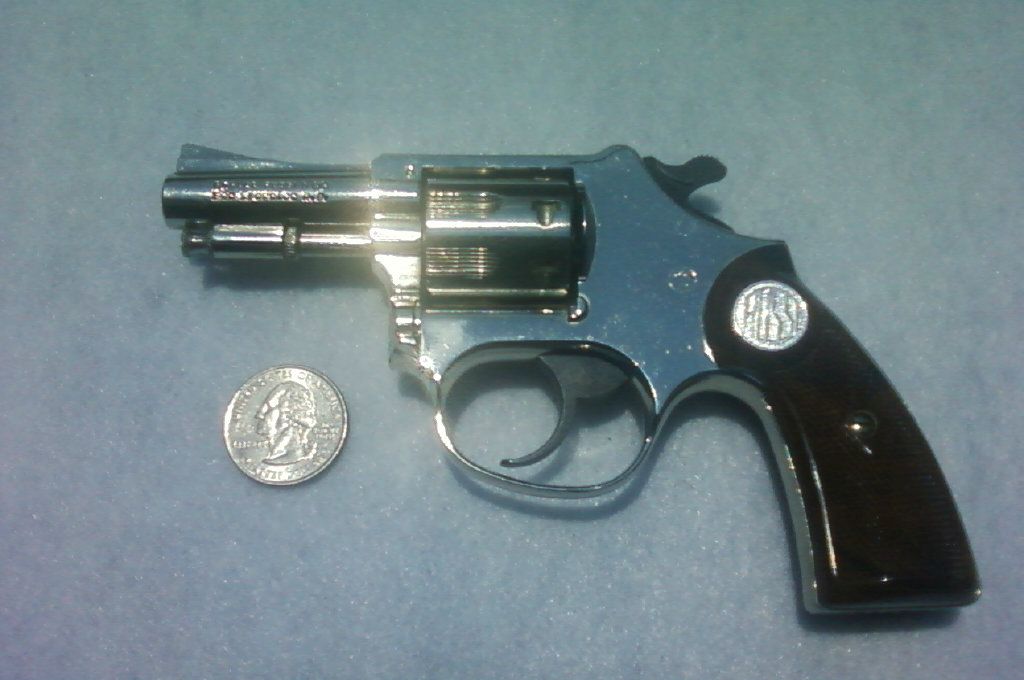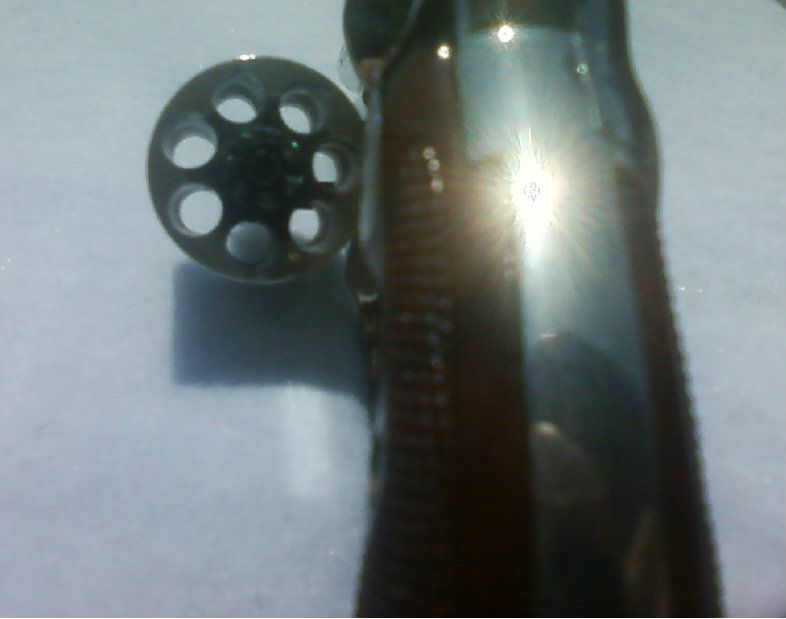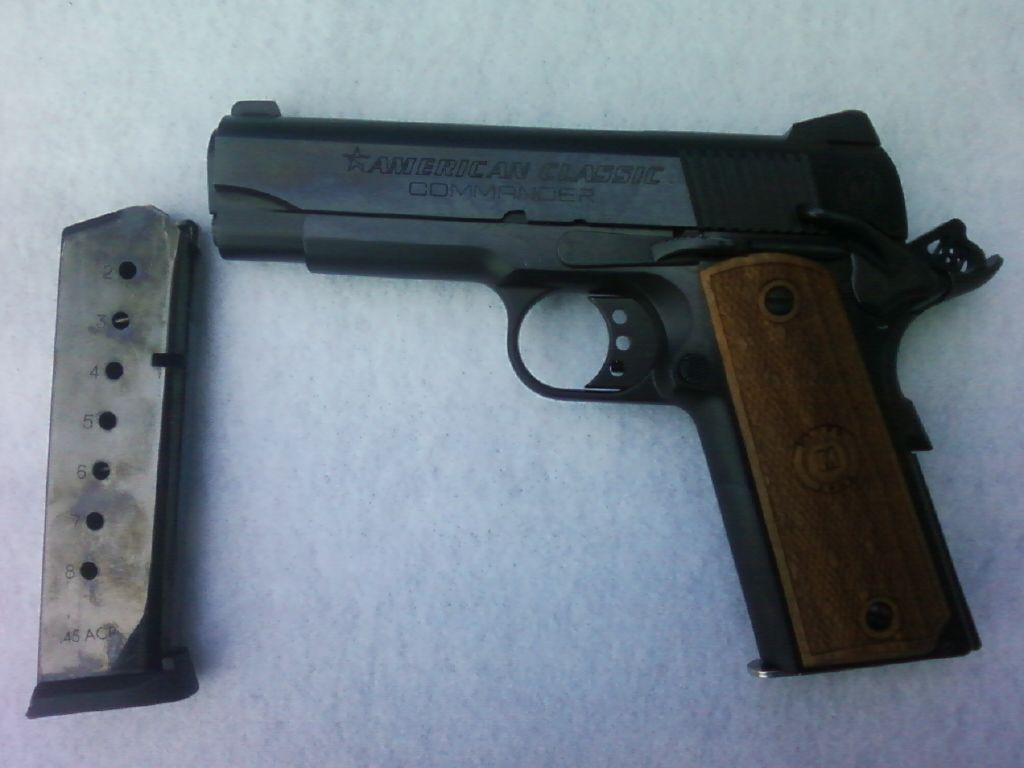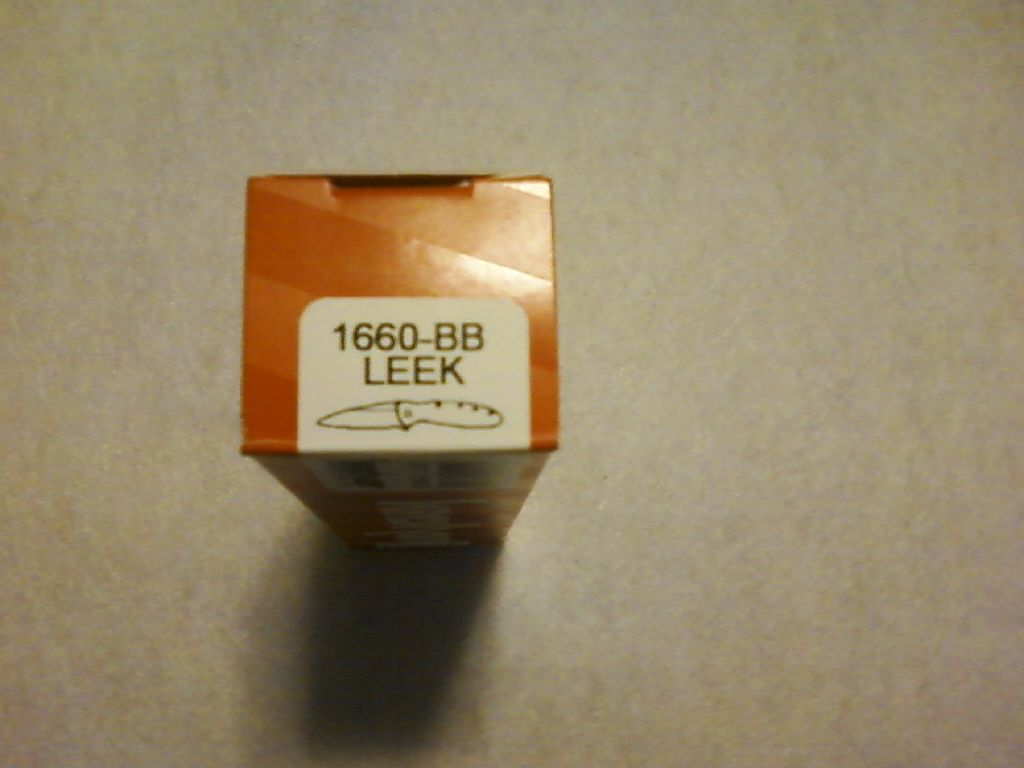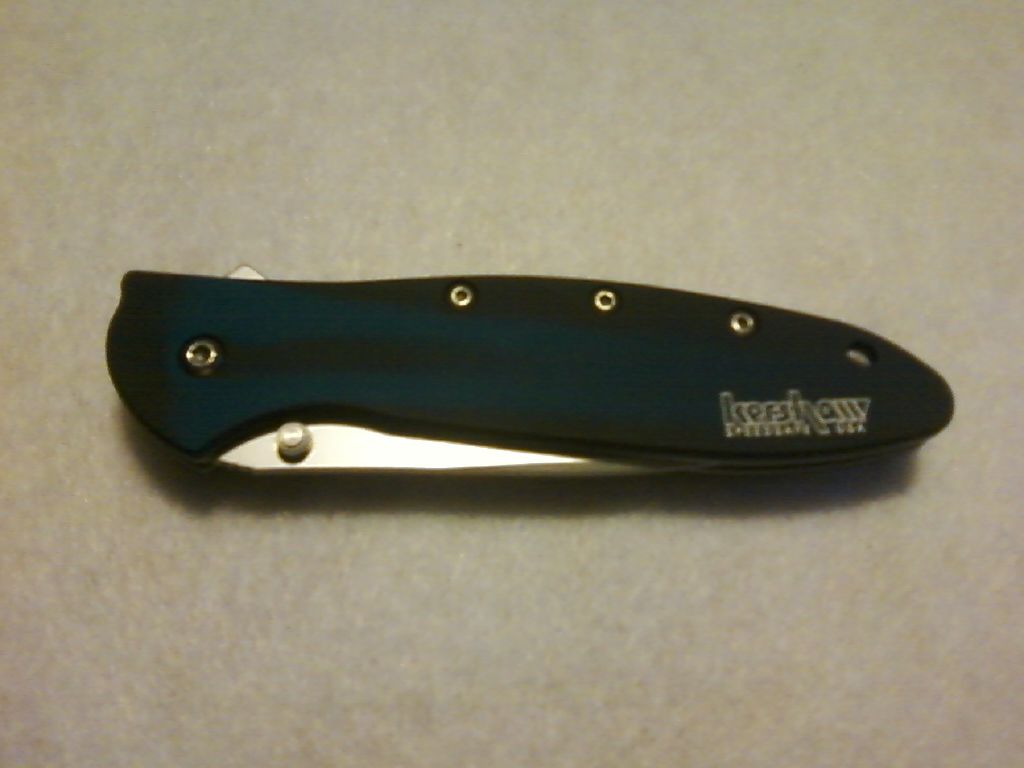Pocket knives are somewhat of a passion of mine. Like guns, I own several knives, because each one is unique: different blades for different purposes, and each one has its own story behind it. I rarely am without a knife, provided I am not in a location where they are prohibited (planes, courtrooms, schools, etc.) I can still remember the first knife I ever had: it was a cheap little University of Tennessee Vols keychain knife given to me by my great uncle. One tiny little knife blade and a file, practically useless as far as knives go, but in the hands of a child (I was 10 at the time... a bit young, perhaps, by today's standards, but not unusual at the time) it might as well have been Excaliber. I carried it with me for a long time, well after the paint had worn off of the handles, until it finally gave up the ghost as I was trying my hand at some whittling. There have been dozens of knives after that one, but, as they say, you never forget your first.
Pocket knives were an essential tool carried by every male member of my family growing up. On the farm, one could expect to need a knife at some point nearly every day. Cutting baling twine, stripping wires, peeling an apple, paring down a replacement axe-handle, using it as an impromptu screw driver... you just felt naked without a knife in your pocket. And I can remember most of those knives, the Old Timer my father carried, the Case knife my grandfather favored, the Uncle Henry my cousin Harry kept in his pocket, well-worn after years of use (and abuse), the blades may have been scratched, but were still kept razor sharp.
Today is no different. I use a pocket knife at work nearly ever day. And while I have experimented with several different knives throughout the years - everything from Swiss Army knives (during my Scouting days as well as my MacGyver obsessed period) to big Buck lockbacks I wore in a leather sheath on my belt - the "perfect" pocket knife has eluded me. That is, perhaps, until now. I believe I might have found a contender for that particular title in the Kershaw Leek.
I have never owned a Kershaw blade before. I had of course heard of the brand, and had seen their displays at knife shops and outdoor stores, but had never given them much of a second glance. This knife really came to my attention, however, when I viewed a
YouTube video review on the Leek by user
LbrtyNJustice4All. I liked the look of the knife, and I liked some of the features which she pointed out, so I decided to take a closer look at it. And of course I ended up buying one (from a local knife shop here in town called
Tri-City Knife Works... if you live in the Tri-Cities area of East TN, give them a visit, they have a lot of really nice knives and accessories there, and the service is excellent).
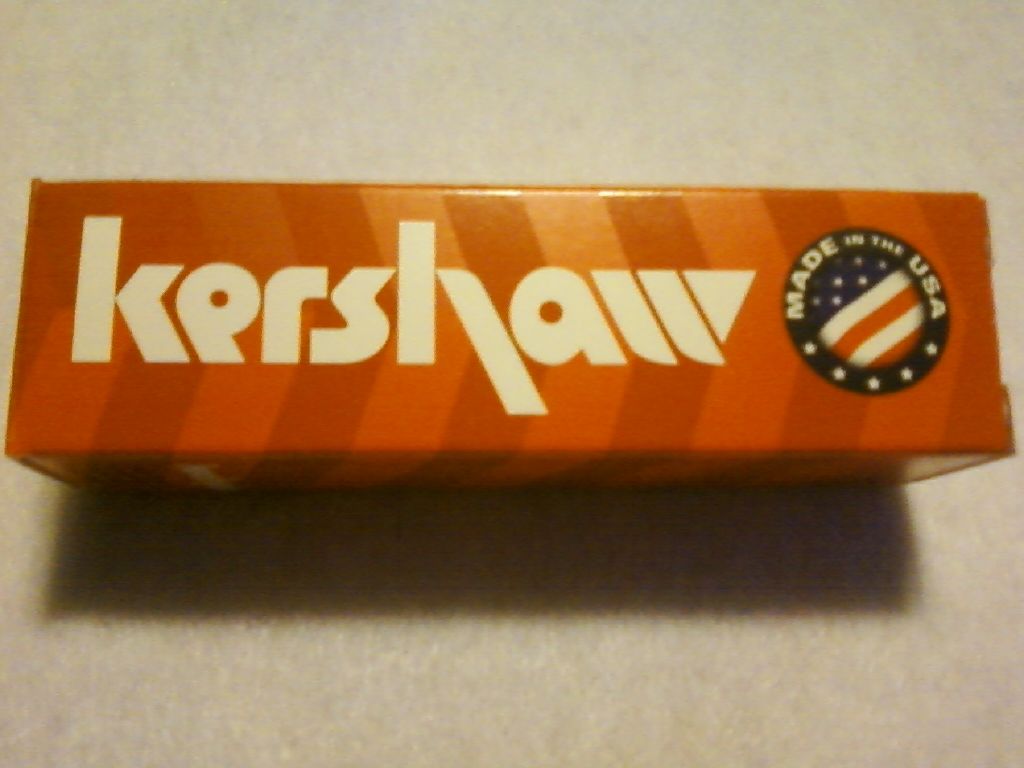 |
| Made in the USA |
First things first:
Kershaw is, as you can see, made in the USA. Now, I am not a drum-beater for all things USA. I have owned several knives, guns, cars, tvs, etc., that have been made overseas and were excellent items, but I do like to support American businesses when I can... and when their products are worthwhile. And the Kershaw Leek that I bought seems very well-made. It also comes with a
limited lifetime warranty, and it also has free lifetime sharpening: when you need a new edge, you may simply pack the knife up and ship it to Kershaw and they will sharpen it for you. All you pay is the shipping to the facility.
The particular blade that I purchased is the 1660-BB, which is the designation for the Blue-Black Assisted Opening Linerlock. It is also known as the "Blue Smoke" Leek, as the blue and black anodized aluminum handles are not shiny, but matte, giving a little better grip than the slick stainless handles some of the other models use.
The Kershaw Leek is 4" long closed, has a 3" blade (actually, 2 7/8" by my measurement), and is just shy of 7" long when opened. It is 1" wide at its widest point, 3/8" thick at its thinnest point, and 1/2" thick at its thickest point (at the pocket clip). It weighs a modest 2.4 oz. This knife disappears in my front pocket. It is quite a bit thinner than most knives I am used to, and I have big hands, so that may take some adjusting to.
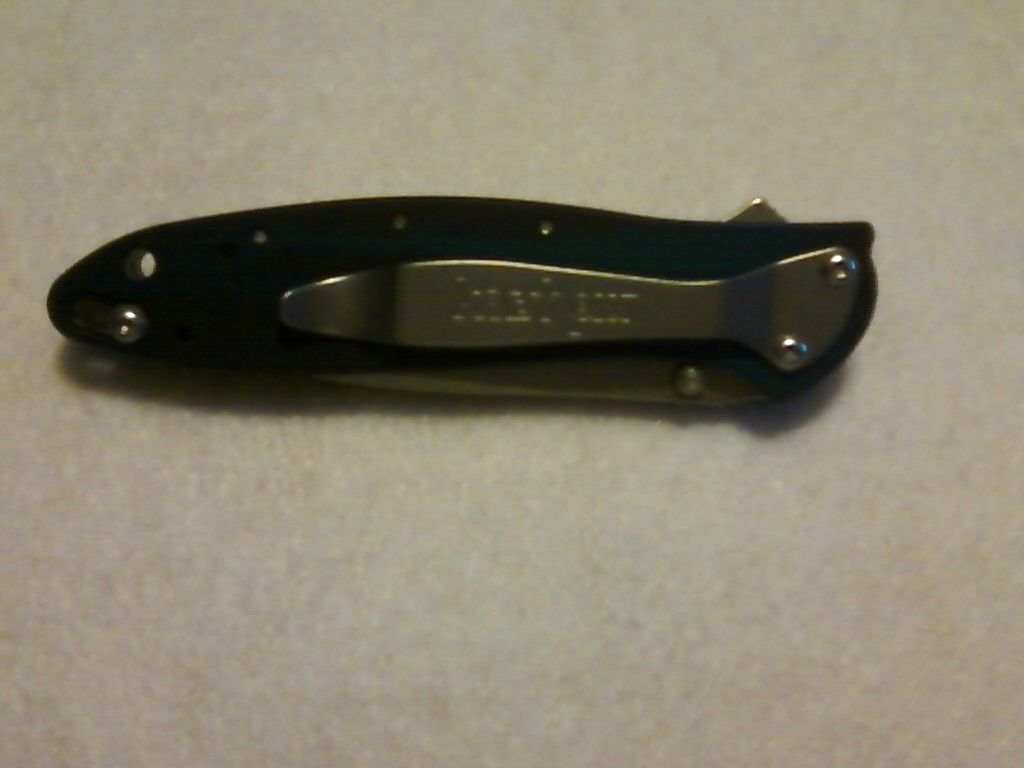 |
| The blade protrusion seen just above the clip provides an alternative to the thumb studs for opening. |
The pocket clip is very strong, and it is reversible in that you may switch it so that it is carried either tip up, or tip down. The knife uses the standard torx screws that have become so popular with knife makers of late, and only two such screws are used to attach the pocket clip.
 |
| Razor sharp and a needle-like point |
The Leek is a Ken Onion design, and his name is etched on the blade (rather than on the handles like previous models). The blade is made of Sandvik 14C28N stainless steel, and has a bead blast finish. This particular knife has a smooth blade from tip to base, unlike the partially-serrated knives that are so popular now. It tapers to a needle-like point, and the blade comes from the factory razor sharp.
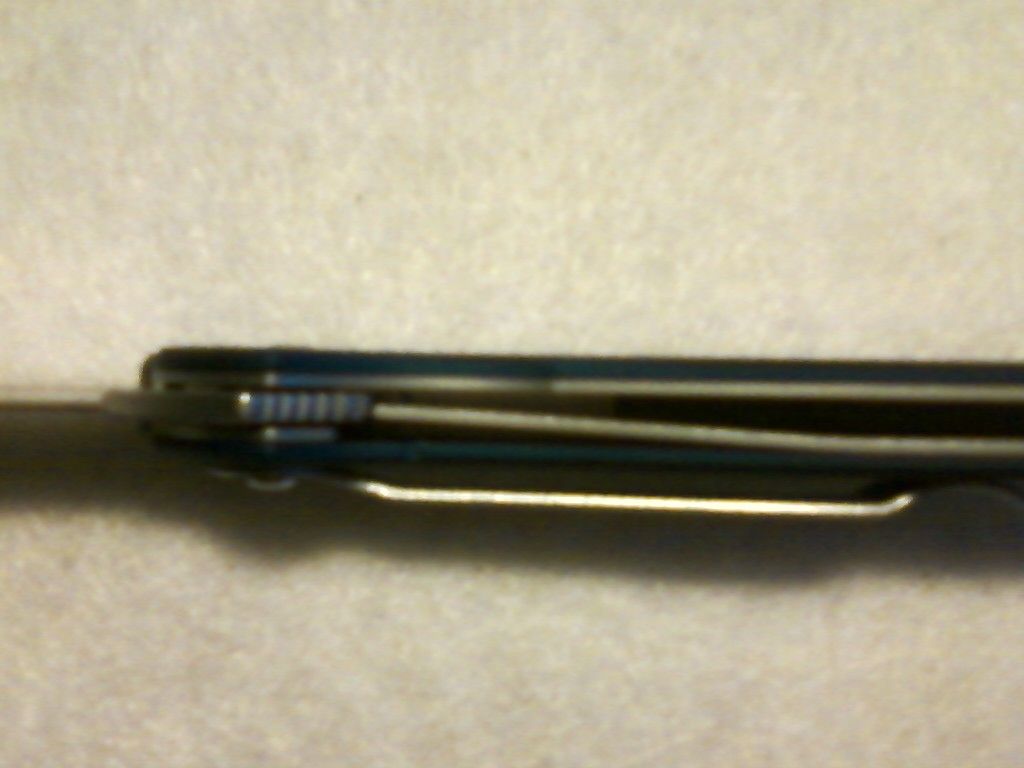
As noted above, this particular model is a linerlock, and I have found that each time the blade is opened, the lock is positively engaged, securing the blade. The linerlock is also very easy to manipulate, making the knife truly a one-hand open, one-hand close pocket knife (for those of us with large hands, I suppose). The Leek uses Kershaw's SpeedSafe assisted opening technology, which makes it one of the fastest and smoothest operating assisted openers I have ever used. The blade is fitted with ambidextrous thumb studs which may be used to flick the blade open, but it also comes with a blade protrusion that sticks out of the base of the handle which may be pressed in to release the blade (this is my preferred method of opening). Once the resistance of the torsion bar that holds the blade closed is overcome, this knife simply leaps open.
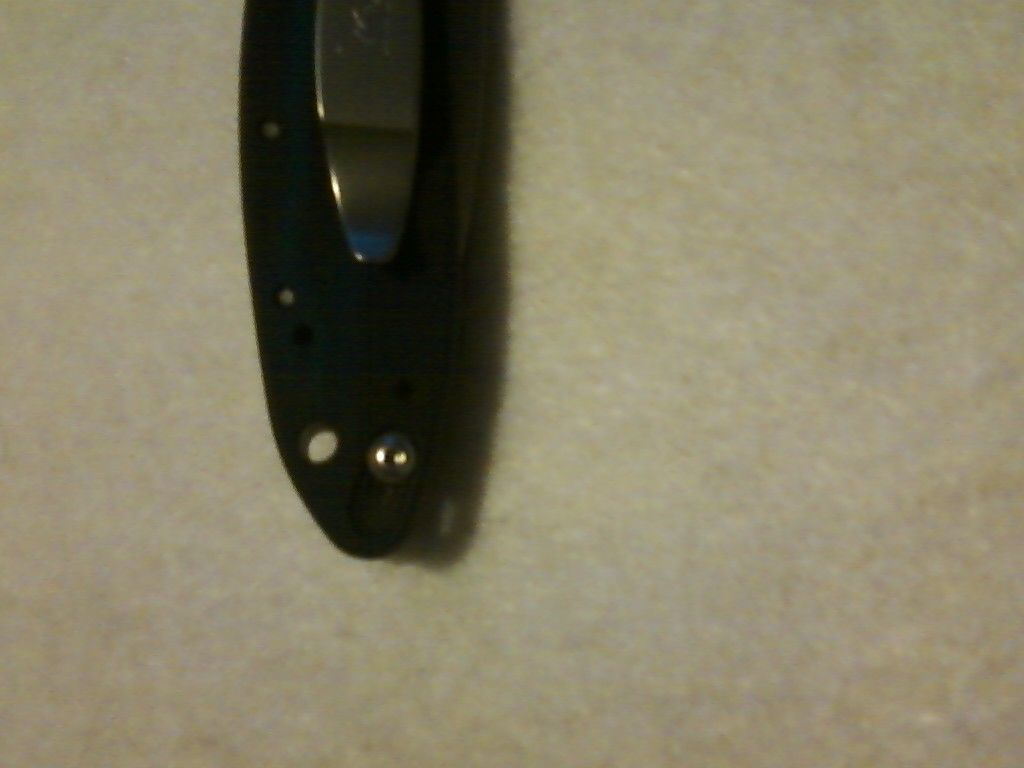 |
| Point-block safety keeps the knife closed in your pocket |
One other innovation I found interesting is the safety "switch" that Kershaw includes on this model. It is basically a screw that is captured in a small channel on the tip-end of the handle. The screw is fitted such that it has free movement back and forth in the channel, and moving the screw moves a slender plastic bar back and forth over the blade tip. When the safety is engaged, the bar blocks the blade tip from rising, thus preventing the knife from opening. Simply pushing the screw forward in the channel frees the blade tip and the knife may be opened. Users with small hands may find the placement of the safety mechanism awkward, but I have found that I can easily manipulate the safety with my ring finger while using my index finger to release the blade.
All-in-all, I have found this to be a great little knife. The blade is just the right length, it is flat, light, and feels good in the hand. The one possible detraction I have found is that the blade tip is very fine, and not designed for prying or heavy use. But if it breaks because I have been using it improperly, then that is my fault, not the knife's. This would be a great EDC knife for self-protection, as it is very quickly deployed, and it is razor sharp, and that tip would easily penetrate clothing. And it is a good deal for the price. This particular knife has a list price of $74.95, but they can be found quite a bit cheaper. I bought mine for $44.95, and while I could have saved a couple of bucks by getting it from Amazon or another online retailer, I like helping local businesses like Tri-City Knife Works when I can (by the way, I bought the last one they had in stock, but they will probably be getting more in soon).
So, if you are in the market for a new knife, be sure to check out the Kershaw Leek, or any of their other offerings (they have several different lines of great looking knives). I think you will like what you see.
P.S. Thanks to LbrtyNJustice4All for turning me on to this knife!

